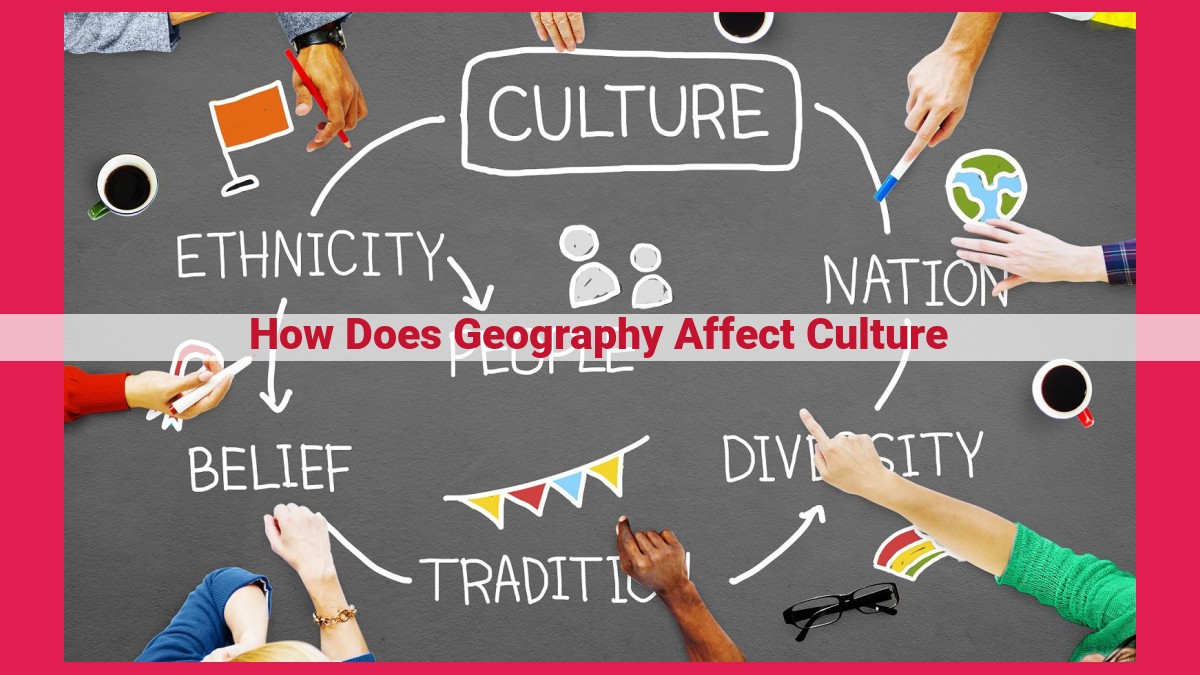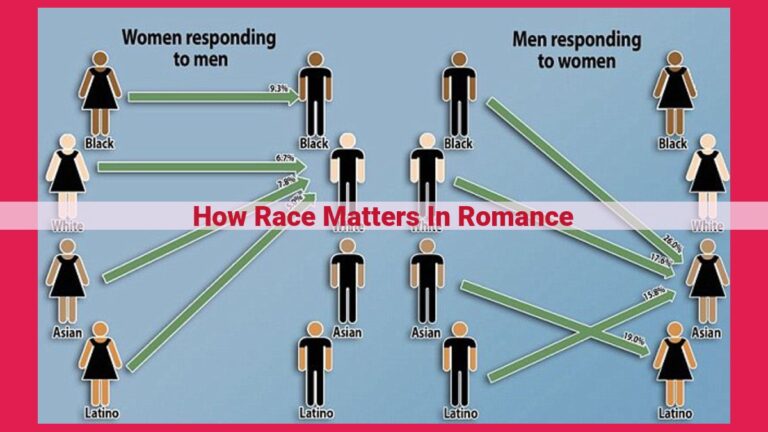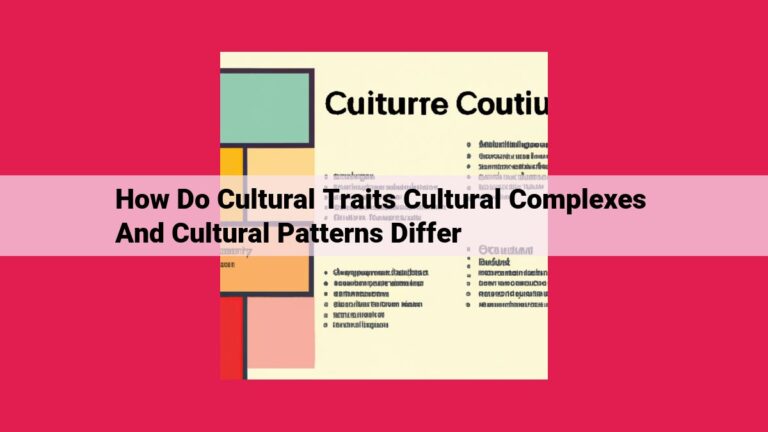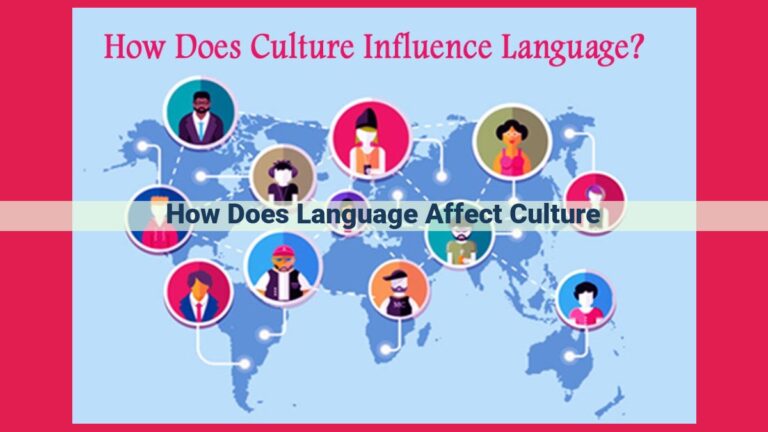The Profound Impact Of Geography On Culture: Exploring Its Multifaceted Influence

Geography deeply shapes culture through its physical environment, human interactions, political boundaries, economic opportunities, unique expressions, environmental impacts, and technological advancements. Physical features influence daily life, settlement patterns, and resource utilization; human connections facilitate the exchange of ideas and migration; political systems define cultural boundaries and identities; economic factors enable cultural expression and innovation; distinct languages, religions, and arts reflect cultural experiences; environmental factors impact cultural practices and conservation; and technology and education preserve and transmit cultural heritage.
Physical Geography: Shaping Culture
The world’s vibrant tapestry of cultures is intricately intertwined with its physical geography. The climate, landforms, and natural resources of a region profoundly shape the way its people live.
Climate’s Influence
Climate dictates everyday life. In warm climates, people construct light, airy dwellings that allow for air circulation. In cold climates, they build sturdy, insulated homes to withstand frigid temperatures. Climate also influences agriculture. Arid regions require irrigation systems, while fertile rainforests support diverse crops.
Landforms’ Impact
Landforms significantly impact settlement patterns. Mountainous regions present challenges for transportation and communication, fostering isolated communities. River valleys, on the other hand, are natural corridors that facilitate trade and cultural exchange. Transportation is also influenced by landforms, with mountains posing obstacles and rivers providing convenient routes for travel.
Natural Resources
The availability of natural resources is a crucial foundation for sustenance and development. Regions with abundant water, minerals, and fertile soil have historically supported thriving civilizations. Natural resources can drive economic activities, such as mining, fishing, and agriculture, and foster trade with other regions.
By understanding the profound influence of physical geography, we gain a deeper appreciation for the diversity of cultures that enrich our world. These elements have shaped human societies for centuries, and they continue to play a pivotal role in the development and evolution of our cultures today.
Human Geography: Connecting People
Human geography delves into how human societies are shaped by and interact with their environment. One significant aspect of human geography is its focus on how people connect with each other.
Population Density and Cultural Norms
Population density plays a crucial role in shaping social interactions, resource availability, and cultural norms. In densely populated areas, where proximity is a defining characteristic, people tend to develop more formalized and structured ways of interacting. They may rely on explicit rules and regulations to maintain order and reduce conflicts in close quarters. In contrast, in less densely populated areas, where space is more abundant, social interactions are often more informal and personal, fostering a sense of community and intimacy.
Migration: A Cultural Exchange Catalyst
Migration is another significant factor that influences how people connect. When individuals move from one place to another, they bring with them their ideas, values, and practices. This cross-cultural exchange can lead to the introduction of new perspectives and enrich the cultural fabric of both the destination and origin communities. Migrants often become bridges between different cultures, facilitating understanding and cooperation. Their presence can also challenge existing social norms and contribute to a more diverse and inclusive society.
Transportation: Facilitating Movement and Exchange
Transportation systems are vital in connecting people across distances. They facilitate movement and enable individuals to access new places, encounter different cultures, and exchange goods and ideas. Improved transportation infrastructure can break down barriers, reduce isolation, and promote economic and cultural interdependence. The globalization of trade and communication has made it easier for people from different parts of the world to connect, share their perspectives, and collaborate on common goals.
By understanding the role of human geography in connecting people, we can appreciate the diversity of human cultures and the interconnectedness of our globalized world. Human geography highlights the importance of openness, cultural exchange, and cooperation in fostering a harmonious and inclusive society where connections transcend boundaries and enrich our lives.
Political Geography: Defining Cultural Boundaries and Identity
The Invisible Lines that Shape Us
Borders are not just lines drawn on a map; they are invisible barriers that delineate cultural boundaries and shape our national identities. They often serve as dividing lines, separating people with different languages, customs, and traditions. However, borders can also be bridges, facilitating trade and cultural exchange.
Borders: Shaping Cultural Landscapes
The presence or absence of borders has a profound impact on the cultural landscape of a region. In areas with porous borders, cultural influences tend to blend and intermingle. For example, the border between Mexico and the United States has created a vibrant and diverse fusion of Mexican and American culture, visible in its food, music, and art.
Conversely, heavily fortified borders can create distinct cultural divisions. The border between North and South Korea exemplifies this, as the two Koreas have developed vastly different political, economic, and cultural systems.
Governments: Enforcers and Facilitators
Governments play a crucial role in shaping cultural practices within their borders. They enforce laws and regulations that influence everything from language policy to religious practices. For instance, some governments may promote the use of a specific language or suppress minority languages, while others may support cultural diversity and freedom of expression.
Moreover, governments can provide funding and support for cultural institutions, such as museums, libraries, and theaters, which play a vital role in preserving and transmitting cultural heritage. By doing so, governments both shape and nurture the cultural identity of their citizens.
Economic Geography: Unlocking Cultural Treasures and Fostering Cooperation
The economic landscape plays a crucial role in shaping and nurturing cultural expressions. As economies flourish, they create lucrative opportunities for cultural manifestations and innovations. This economic growth also enables a more equitable distribution of wealth, allowing individuals to invest in their cultural pursuits.
Trade, a cornerstone of economic geography, acts as a catalyst for cultural exchange. It facilitates the 流通 of cultural goods across borders, exposing people to diverse traditions and perspectives. This interchange promotes understanding and cooperation among different cultures, as people appreciate the richness and beauty of others’ ways of life.
For example, the flourishing trade routes of the ancient Silk Road connected diverse civilizations, facilitating the spread of religious beliefs, artistic traditions, and scientific discoveries. This cultural exchange left an indelible mark on the civilizations involved, enriching their heritage and shaping their identities.
Cultural Geography: Unique Expressions
Culture is the unique identity of a society, shaped by its experiences, beliefs, and creativity. Three key elements that define cultural geography are language, religion, and the arts.
Language: A Mirror of Culture
Language is more than a means of communication. It reflects the history, experiences, and worldview of a culture. Words carry meaning beyond their literal definitions, evoking cultural nuances and shared understandings. The vocabulary of a language reflects the environment, customs, and values of the people who speak it.
Religion: Shaping Beliefs and Practices
Religion is a powerful force that shapes cultural values, beliefs, and social practices. It provides a framework for understanding the world and prescribes norms for behavior. Religious rituals, holidays, and festivals are central to many cultures, unifying communities and giving meaning to life. Religion influences art, music, and literature, enriching cultural expression.
Arts: Expression of Creativity and Identity
The arts are a vibrant expression of cultural creativity. They embody the unique perspectives, emotions, and experiences of a society. Painting, sculpture, music, dance, and literature not only entertain but also document and transmit cultural values and traditions. Arts enhance a sense of place, defining cultural identity and leaving a legacy for future generations.
By understanding the interconnectedness of language, religion, and the arts, we gain a deeper appreciation for the diverse cultural expressions that enrich our world. These elements shape our perceptions, influence our behavior, and connect us as a global community.
Environmental Geography: The Interplay of Culture, Nature, and Sustainability
Environmental geography explores the complex relationship between humans and their natural surroundings, uncovering how the environment shapes and is shaped by our cultural practices.
Climate Change: A Threat to Cultural Treasures and Livelihoods
Climate change poses significant challenges to cultural preservation and the sustainability of communities. Rising sea levels threaten coastal heritage sites, while changing precipitation patterns disrupt traditional farming practices and water resources. For example, the Inuit people of the Arctic face challenges in preserving their hunting traditions as sea ice melts at an alarming rate.
Conservation: Preserving Cultural Identity and Nature’s Bounty
Conservation efforts play a crucial role in safeguarding both cultural heritage and natural resources. By protecting sacred landscapes, ancient forests, and endangered species, we not only preserve cultural traditions but also promote environmental stewardship. The Hopi people of the American Southwest have successfully collaborated with scientists to protect their traditional farming lands, ensuring the continuation of their cultural practices and the conservation of the delicate desert ecosystem.
Environmental geography highlights the interconnectedness of culture, nature, and sustainability. By understanding the impacts of climate change and the importance of conservation, we can take proactive steps to preserve our cultural heritage while ensuring the well-being of future generations. Embracing the principles of environmental stewardship allows us to foster a harmonious coexistence between humans and the natural world.
Technology and Education: Preserving and Transmitting Culture
In the intricate tapestry of human civilization, technology and education have emerged as indispensable threads, weaving the fabric of our cultural heritage. These potent forces shape our understanding of the past, present, and future, allowing us to preserve and transmit our collective knowledge, values, and traditions.
Technology: A Bridge Across Time and Space
Technology has revolutionized the way we communicate, fostering unprecedented cultural exchange and global connectivity. Through the advent of social media, instant messaging, and video conferencing, individuals from diverse backgrounds can now connect and share their stories, ideas, and experiences. This digital bridge allows us to learn about different cultures without physical barriers, fostering empathy and understanding.
Moreover, technology plays a crucial role in preserving cultural traditions. Digital archives, online museums, and virtual reality experiences enable us to access and explore cultural artifacts, historical sites, and intangible heritage that would otherwise be lost to the passage of time. By democratizing access to cultural resources, technology empowers us to appreciate and safeguard our collective heritage.
Education: Nurturing Cultural Roots
Education is the cornerstone of cultural transmission, providing a fertile ground for the cultivation of cultural values, knowledge, and skills. Through formal and informal learning environments, such as schools, universities, and community centers, individuals are exposed to the beliefs, practices, and traditions of their society.
Education fosters cultural awareness and appreciation, enabling learners to develop a deep understanding of their own culture as well as the cultures of others. By embracing diversity and encouraging open dialogue, education creates a safe and inclusive space for cultural exchange and mutual enrichment.
Moreover, education plays a pivotal role in preserving cultural practices and languages. Indigenous knowledge systems, traditional arts, and endangered languages are passed down through generations through formal education programs and community-based initiatives. By nurturing these cultural expressions, education ensures their continued existence and vibrancy.
In conclusion, technology and education are indispensable partners in preserving and transmitting culture. Technology provides a platform for cultural exchange and digital preservation, while education fosters cultural awareness and the transmission of traditional knowledge and skills. By harnessing these powerful tools, we can safeguard our cultural heritage, promote cultural understanding, and enrich the tapestry of human civilization for generations to come.



